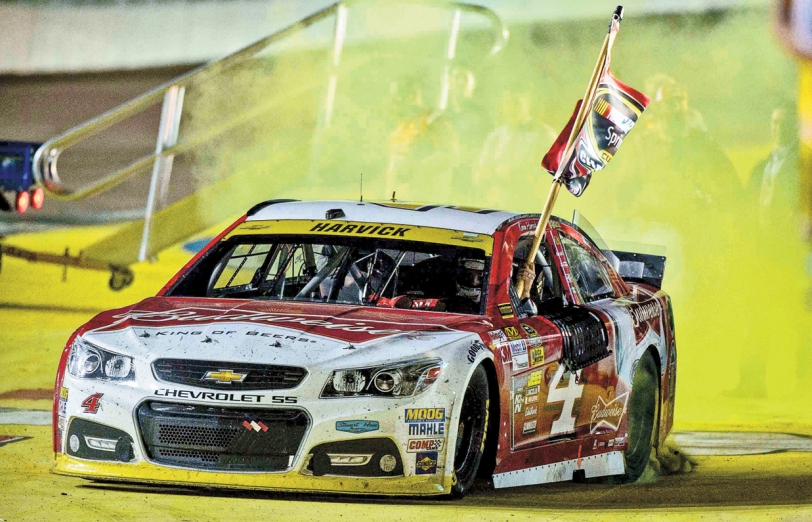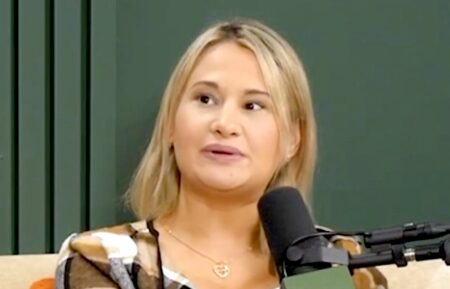NASCAR Season Preview: You Have To Win It To Be In It


About this time last year, every NASCAR Sprint Cup driver had the same dream–they all wanted to be Dale Earnhardt Jr.
It wasn’t just because the sport’s longtime most popular driver (right) had won its biggest race, the season-opening Daytona 500. It was also the bonus that came with that victory–in the new points system introduced last season, Earnhardt’s triumph gave him an all-but-guaranteed spot in the Chase for the Cup, NASCAR’s fall playoff. By taking the checkered flag, Earnhardt had also punched his golden ticket.
“I’ve never been so jealous of another driver,” says Carl Edwards, a two-time championship bridesmaid who left the Roush Fenway Racing team and joined Joe Gibbs Racing this season to get a fresh start. “Everyone’s plan is [to] win early so that you can focus on preparing for the Chase, and I think you’re going to see some interesting strategies.”
With this win-and-you’re-in idea now locked firmly in everyone’s mind, NASCAR’s premier-series drivers are approaching the 2015 season with their greatest sense of urgency in years. It is possible to qualify for the Chase without a victory–Ryan Newman made the cut last year by consistently racking up high finishes. But in a perfect world, a trip to Victory Lane in one of the first races allows a driver to focus on a title run, hopefully peaking at the right time–as Kevin Harvick (below) did last year, winning the last two races and securing the championship.

But first you have to win a race–to be specific, one of the first 26–a stressful imperative even for men comfortable flying around a track at over 200 miles per hour. “In talking to several drivers after the season, one thing I kept hearing was, ‘I was so nervous. I was almost physically ill.’ I think that’s what spawns the intensity,” says Earnhardt, whose early playoff exit last year can’t erase the thrill of his four victories, equaling his total from the previous nine seasons combined. “We drive way over our heads in that emotion. But you’ve got to be smart and aggressive at the same time.”
According to NASCAR Hall of Famer Dale Jarrett, drivers need to take chances early in the season, in the first 10 races, because after that the pressure will start mounting. “I think that’s why we’ll see some real chances taken at the Daytona 500,” says Jarrett, now a member of NBC Sports’ broadcast team as the company begins its 10-year contract, sharing coverage with Fox Sports.
No one is suggesting winning early will be easy, but some racers are facing distractions that can’t be solved by the engine shop. Kurt Busch has endured an off-season of personal turmoil, with accusations of domestic assault in a case involving his ex-girlfriend, Patricia Driscoll, whom he characterized in court documents as a “trained assassin.” The judge in the case recently issued a “no contact” order, meaning Busch must keep a distance of 100 yards from Driscoll. As of now, neither NASCAR nor Stewart-Haas Racing has imposed additional penalties, but further court decisions could lead to Busch getting stiffer penalties, and perhaps keeping him out of his car. Meanwhile Busch’s team owner, Tony Stewart, hopes his own seat time helps him to gain some distance from two awful crashes–first, a 2013 wreck that left him with leg injuries that are still healing, and, worse, a controversial 2014 sprint car accident that led to the death of 20-year-old driver Kevin Ward Jr. Both incidents had Stewart out of his Cup car for stretches, and he’s pining to return for a full season in 2015. “We’ve had two rough years, back-to-back, which I wouldn’t wish on anybody,” Stewart says. “But deep inside I know who I am as a person and as a driver. That’s what I want to get back to.”

Also eyeing a return to former glory is four-time champion Jeff Gordon (right), who single-handedly ushered in the era of the youthful, media-savvy modern race car driver. He will run his final full-time Cup campaign, hoping to go out with more trophies to add to his collection. He’s got a very good shot–last year, Gordon had his best statistical performance since 2009, but a late-season tussle with 2012 champion Brad Keselowski at the Fort Worth race helped end his chances. “Gordon was strong every week,” says fellow driver Elliott Sadler, “but with all that happened at Texas, he was out of the championship.”
Nobody plans to hand the title to Gordon, least of all defending champ Harvick, who mastered the chaos and stress last season. “You have to be able to put yourself in a different place mentally,” Harvick says. “Everything was overshadowed by the intensity of the situation we were in from a racing standpoint.”
But no driver exemplified the relentless beating-and-banging determination like Keselowski, who became the central figure in late-season postrace brawls at two races that helped shift the title fortunes of Gordon and Matt Kenseth. Given the positive fan reaction to driver passion spurred by the points system, an unapologetic Keselowski suggests 2014 was just a warm-up for the wild competition of 2015. “The new chase has put us in a new era, and you’ll see more heated moments,” he says. “You’re gonna have to be very aggressive to win championships under this format, and I don’t think that’s a bad thing.”
The Daytona 500 airs Sunday, Feb. 22, 1p.m./ET, Fox






